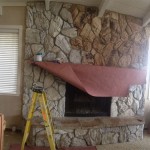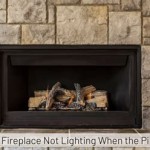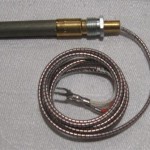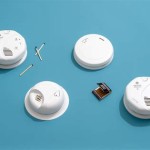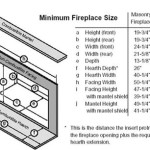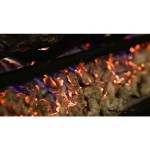The Strategic Placement: Fireplace in Living Room Corner
The fireplace, a traditional focal point of many homes, offers warmth, ambiance, and a sense of comfort. Its design and placement significantly influence the overall aesthetic and functionality of a living room. While a fireplace traditionally resided on a central wall, incorporating a fireplace into a corner presents a unique set of design considerations and advantages. This placement option can maximize space, create a distinct visual appeal, and offer design flexibility that a centrally located fireplace might not provide.
Choosing to position a fireplace in the corner of a living room requires careful planning. Dimensions of the room, furniture arrangement, and architectural style must be considered. The type of fireplace—wood-burning, gas, or electric—also influences installation requirements and aesthetic possibilities. A corner fireplace can become a dramatic statement piece, drawing the eye and defining the room's character, or it can be a more subtle and integrated element, blending seamlessly with the existing décor. The decision ultimately depends on the homeowner's preferences and the desired effect.
Space Optimization and Flow
One of the key benefits of a corner fireplace is its ability to optimize space within a living room. In smaller rooms, using a corner for the fireplace frees up valuable wall space for furniture placement, art, or storage. By tucking the fireplace into a corner, the room avoids having a large, central feature dominating the floor plan. This placement can allow for a more open and airy feel, making the room appear larger than it actually is.
The corner placement also affects the flow of traffic within the room. A central fireplace often divides the room, creating distinct zones or hindering movement. A corner fireplace, on the other hand, often allows for a more natural and unobstructed flow. Furniture can be arranged to face the corner, encouraging conversation and creating a cozy gathering space. This configuration can be particularly beneficial in open-concept living areas, where defining spaces without creating physical barriers is crucial.
Furthermore, the shape of the corner itself can be leveraged to create a visually interesting design. A traditional 90-degree corner can be softened with a rounded fireplace design, or it can be accentuated with a sharp-angled, modern fireplace. The dimensions of the corner can also dictate the size and scale of the fireplace. A small corner might require a more compact unit, while a larger corner can accommodate a more substantial and imposing fireplace.
Design Versatility and Aesthetic Impact
A corner fireplace offers design versatility that can complement various architectural styles and personal preferences. From rustic stone fireplaces to sleek, modern gas units, the corner placement can enhance any aesthetic. The surrounding materials and finishes play a critical role in achieving the desired look. Natural stone can create a warm and inviting atmosphere, while brick can add a touch of traditional charm. For a more contemporary feel, materials like concrete or metal can be used.
The shape and style of the fireplace itself contribute significantly to the visual impact. A triangular fireplace, specifically designed for corner placement, can create a dramatic focal point. Alternatively, a more traditional rectangular fireplace can be angled into the corner, offering a classic and familiar look. The choice depends on the overall design scheme of the living room and the desired level of visual prominence.
Beyond the fireplace itself, the surrounding area provides opportunities for creative design. A mantel can be added for displaying decorative items or family photos. Shelving can be built on either side of the fireplace to create a functional and visually appealing storage solution. The wall around the fireplace can be painted a contrasting color to highlight the feature or clad in decorative tile for added texture and visual interest. The possibilities are virtually endless, allowing homeowners to personalize the space and create a unique and inviting atmosphere.
Installation Considerations and Safety
Installing a fireplace in a corner requires careful consideration of various factors, including ventilation, safety regulations, and structural integrity. The type of fireplace chosen—wood-burning, gas, or electric—will dictate the specific installation requirements. Wood-burning fireplaces require a chimney for venting smoke and combustion gases, while gas fireplaces typically require a gas line connection and a venting system. Electric fireplaces, on the other hand, are relatively easy to install, as they only require an electrical outlet.
Building codes and safety regulations must be strictly adhered to during the installation process. These regulations often specify minimum clearances between the fireplace and combustible materials, as well as requirements for chimney height and construction. It is crucial to consult with a qualified professional to ensure that the installation meets all applicable codes and safety standards. This professional can also inspect the existing structure to ensure that it can safely support the weight of the fireplace and chimney.
Safety is paramount when operating any type of fireplace. Wood-burning fireplaces require careful attention to fire safety, including proper storage of firewood, regular chimney cleaning, and the use of a fire screen to prevent sparks from escaping. Gas fireplaces should be regularly inspected for gas leaks and other potential hazards. Electric fireplaces, while generally safer, should be used with caution to avoid overloading the electrical circuit. Carbon monoxide detectors should be installed in the living room to provide an early warning of any dangerous gas buildup, regardless of the type of fireplace used. Regular maintenance and inspections are crucial to ensuring the safe and efficient operation of the fireplace for years to come.
In addition to these practical considerations, homeowners may also want to think about the environmental impact of their fireplace choice. Wood-burning fireplaces can contribute to air pollution, while gas fireplaces release greenhouse gases. Electric fireplaces, if powered by renewable energy sources, may be a more environmentally friendly option. Choosing a fireplace that aligns with one's environmental values is an important consideration for many homeowners.
Beyond the technical and safety aspects, the aesthetic integration of the fireplace with the surrounding room is vital. The fireplace should not only function effectively but also complement the existing décor and enhance the overall atmosphere of the living room. Careful attention should be paid to the materials, colors, and textures used in the fireplace design to ensure that it blends seamlessly with the rest of the space. The fireplace should be a welcoming and inviting feature that adds to the comfort and enjoyment of the living room.
Ultimately, the decision to place a fireplace in the corner of a living room is a personal one that should be based on careful consideration of space, design, and safety. By understanding the advantages and challenges associated with this placement option, homeowners can make an informed decision that will enhance the beauty and functionality of their living space.

How To Design Around A Corner Fireplace

Working With A Corner Fireplace Emily Clark

Discover The Charm Of Kellswater In Orange County Ca

Awkward Living Room Layout With Corner Fireplace

How To Design A Living Room With Corner Fireplace Layout Modsy Blog Fireplaces

How To Arrange Furniture With A Corner Fireplace Setting For Four Interiors

Arranging Furniture With A Corner Fireplace Brooklyn Berry Designs

How To Arrange Furniture With A Corner Fireplace Setting For Four Interiors

How To Arrange Furniture With A Corner Fireplace Setting For Four Interiors

How To Arrange Furniture Around A Corner Fireplace Bloom In The Black
Related Posts

